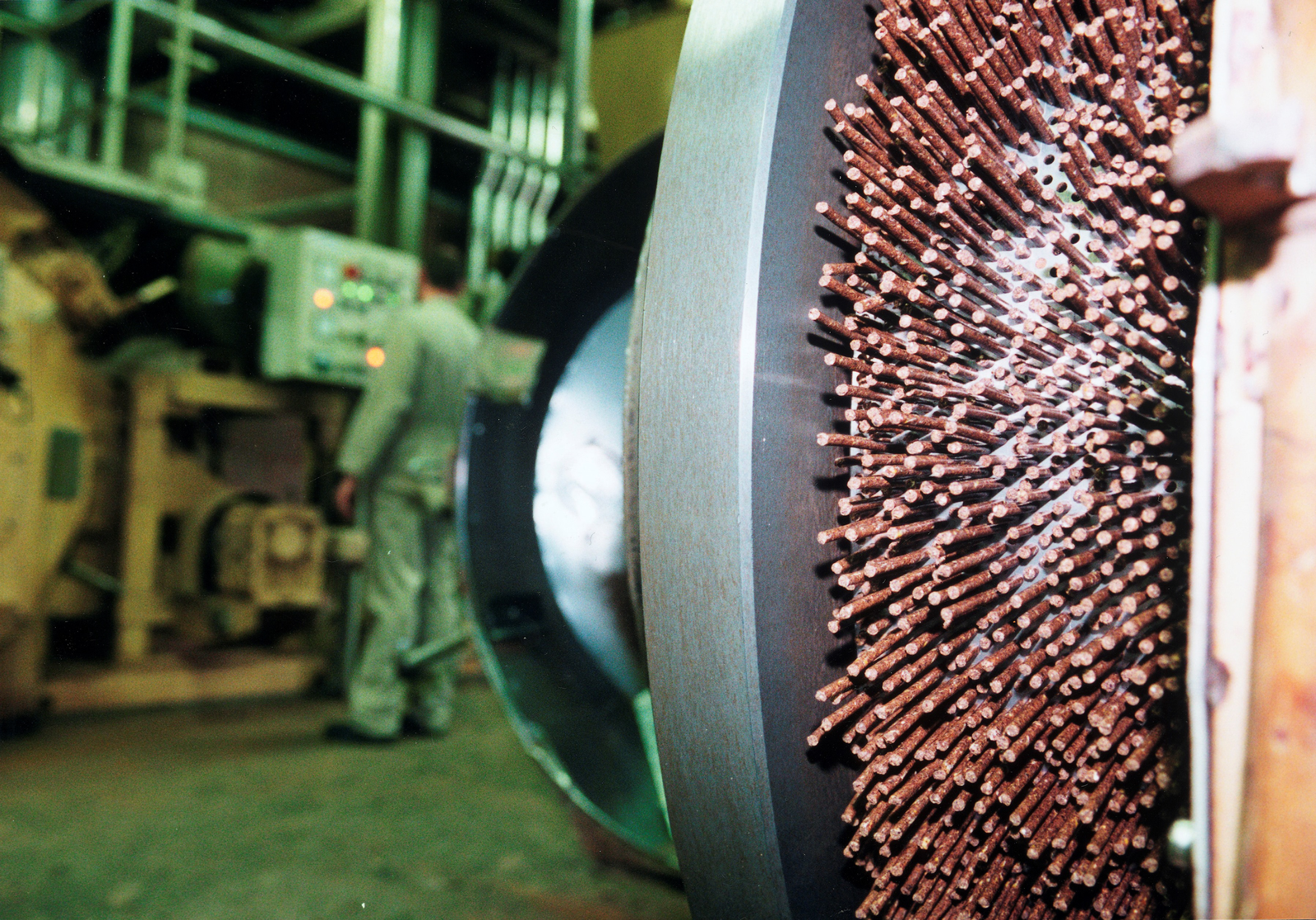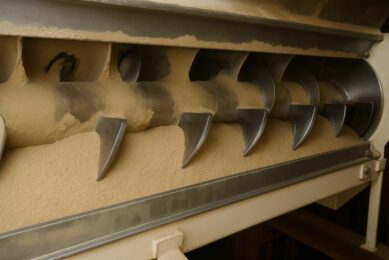Process technology over the last 50 years

Over the last 50 years, the technology used in compound feed production has changed quite a lot. Here we take a look at the changes in the equipment used over the years.
By Thomas van der Poel, Animal Nutrition group, Wageningen University, Wageningen, The Netherlands
As students in the early 70s, we were taught the principles for size reduction on examples of roller milling from the wheat (food) flour industry. We were also told that so-called hammer mills and pellet presses were used in the animal compound feed industry. The delivery of feeds in bulk had just taken over the delivery of feeds in bags of 20 kg or more. Between 1960 and 1980 (modernisation period), production of compound feed was followed by subsequent storage and with delivery to farmers on request. It was a period of rationalisation and modernisation and the beginning of production with requirements in view of legislation. A long list of diet ingredients was available; in Europe especially large quantities of by-products from the human food industries. In addition to mash diet production, agglomeration techniques were popular as a subject of research. More and more publications on feed technology arrived. As students, we focused on relatively popular journals that published articles on these matters. Researches of Friedrich and Robohm (Kraftfutter, 1968; 1969) were published and taught us not only that process conditions influenced the quality of pelleted feeds that were produced, but also that ingredient properties played an important role in the pellet quality. An overview was published in ‘Nutrition Abstract & Reviews’ about the effects of pelleting on performance and nutrient digestibility in pigs. This was one typical keynote manuscript on the subject of feed technology that has never left our minds. This manuscript of Vanschoubroeck et al. (Ghent, 1971), described the results of a nice review on 66 papers (see results in Table 1) and sparked the students´ realisation that examining processing effects in vivo is very important and that these effects may differ within and between animal species.
Period of consciousness
The years between 1980 and 2000 marked the period of consciousness; what are we feeding our animals? And once mycotoxins and anti-nutritional factors in ingredients were recognised, what technology could be used to minimise their effects? Is this a special technology (toasting, radiation as primary processing) or is it sufficient to use techniques in the feed plant (secondary processing) such as pelleting? It was also a period during which more attention was paid to the environment and to animal welfare. The development of quality systems (GMP) was initiated. On one hand abundant studies were performed on the mixing and heat-stability of feed additives, while on the other hand there were critical questions on critical additives (e.g. antibiotics). All reasons that made companies overthink their feed technologies to be used or optimised. It was the period of the First International Symposium on Particle Size Reduction in the Feed Industry, organised by the Kansas State University (1983), emphasising possibilities and challenges with Proceedings that were interesting for both industry and scientists. In the feed plants there was a lot of attention on the reduction of energy consumption. Energy costs were related to ingredients, capacity, processes (particle size reduction, pelleting, conveying) and distribution. Steps were taken to decrease the costs as much as possible unless feed efficiency was improved. We all know that technological processes are used for different objectives: fixation of the mix ratio’s (mixing process), improvement of handling properties (flowability e.g.) and influencing the feed efficiency. Especially the latter reason is important, but it is also a complex matter; in addition to the processing and the type of ingredient, the target animal and phase of development are important. For one nutrient the processing effect can be positive, whereas for the other it may be the opposite. Thus, it was important to have an idea of costs and they were weighed against the improvement of feed efficiency in different animal species. These are still some of the research subjects anno 2015.

A sample of a calf diet. Nowadays, the effects of processing on feed efficiency is more of an issue than a few decades ago. Also, more alternative protein sources are incorporated in animal diets, having an effect on the processing part.
Technology as a nutrient
The period between 2000 and 2020 is known as the period for customer-oriented production of compound feed and consideration for special wishes. It has to do with food safety and quality, animal health, etc. Special attention is given to new technologies improving nutrient availability in feedstuffs, hygiene in poultry diets, e.g. decontamination in mash diets. Energy is again an important issue in technology, and feed additives are newly developed to replace feed antibiotics, are made more concentrated or are targeted for the specific area in the animal body where they should really perform. Anno 2015, we are facing the fact that we want ´technology to be seen as a nutrient’. If so, we are interested in all kinds of processing techniques for diet ingredients and its relation with feeding value since these processing effects then have to be included in the linear programming of feeds.
Effects on feed efficiency
But we are also interested in the factory itself, the processes and their control in feed plants, the ‘simple’ grinding, mixing, pelleting lines, where variation in performance, in energy costs is still large and sometimes difficult to predict from what we know. Even today, we should have a lot more attention to analyse different processes, their process conditions, and/or their order. In addition, we should have a good idea about the effects of processing on feed efficiency, especially when exploring alternative protein sources or where relatively new issues are published. Over-processing, e.g. in pet food during pelleting/extrusion, has been indicated to be important (van Rooijen et al. 2014) in view of protein/lysine utilisation with respect to results of the Maillard reaction (Table 2). By controlling our processes and better knowing its effects, we will know how product development in the animal compound feed should proceed creating functional feeds/nutrients based on ingredients and feed additives via processing. Via processing in the coming 50 years. And let’s bear in mind, that physical quality is important but that processing is not done in practise at the expense of nutritional quality. AAF
References available on request, please email: Thomas.vanderpoel@wur.nl











